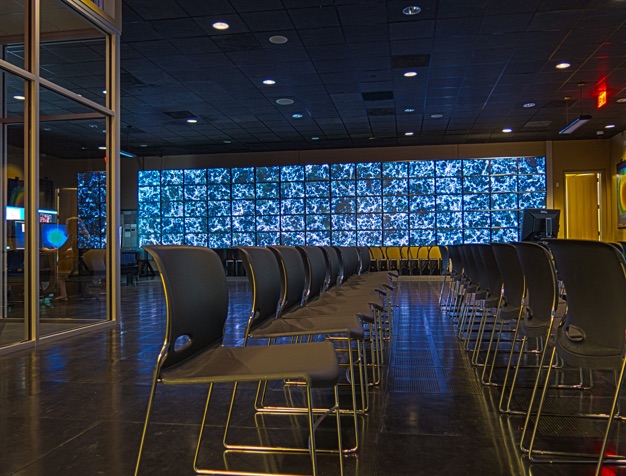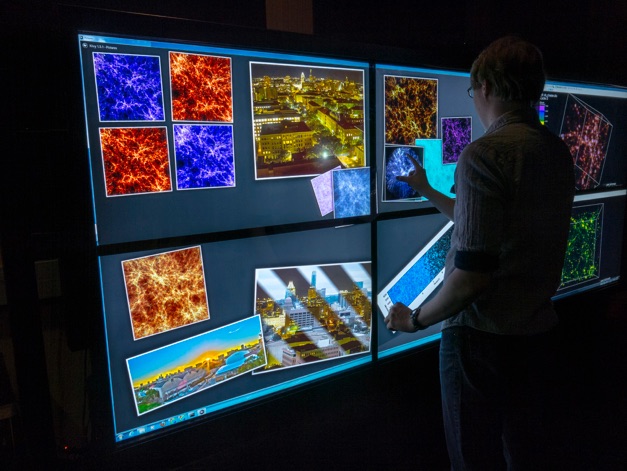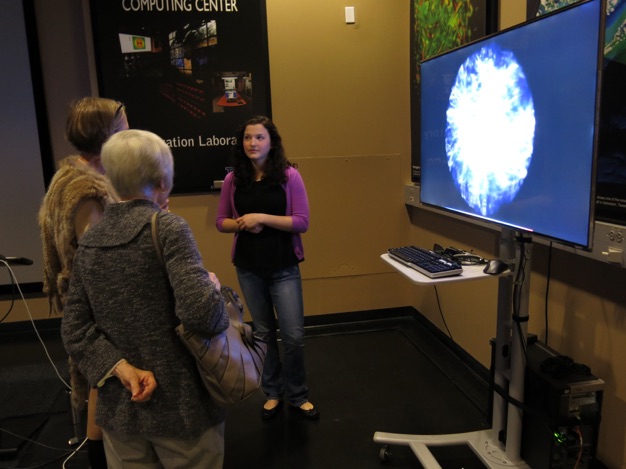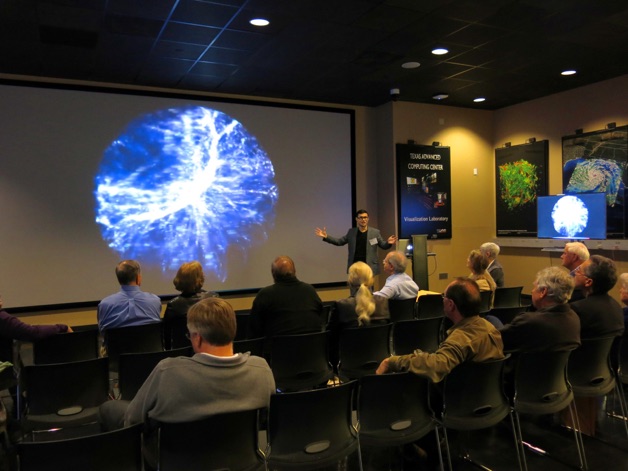Visualizations of Structure Formation in the Universe
Visualizations are important in research because they can help us understand simulation data, and can even result in new research avenues that would have been missed otherwise. Visualizations are also powerful educational tools that have a unique ability to generate interest among students and the public. As a postdoctoral fellow at the University of Texas at Austin, I was very fortunate to have access to one of the best scientific visualization facilities in the world: the Texas Advanced Computing Center’s Visualization Laboratory. Along with students in the Cosmic Dawn Freshmen Research Initiative stream, I I developed multi-scale images of a cosmological N-body simulation on a 329 megapixel tiled display, Stallion, a “3-dimensional” movie on the Mustang stereoscopic display, and an interactive presentation on a 12.4 megapixel multi-touch tiled display, Lasso (see images below).




A high-resolution image of a cosmological N-body simulation on Stallion. Stallion is equipped with a joystick that allows you to navigate and zoom in on the image.
Former Cosmic Dawn student Jacob Schmelz (now a student mentor for Cosmic Dawn) manipulating some of our visualizations on the Lasso multi-touch display.
A “3-dimensional” movie of rotation around the most massive halo in our N-body simulation box on the Mustang stereoscopic display. Former Cosmic Dawn student and mentor Julie Gerzina is discussing the movie with Department of Astronomy Board of Visitors members.
Me giving a presentation at the VisLab for the Department of Astronomy Board of Visitors meeting in February of 2012.